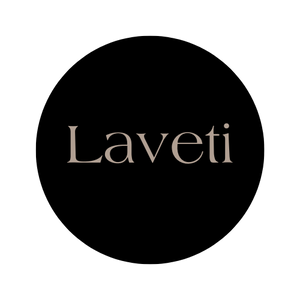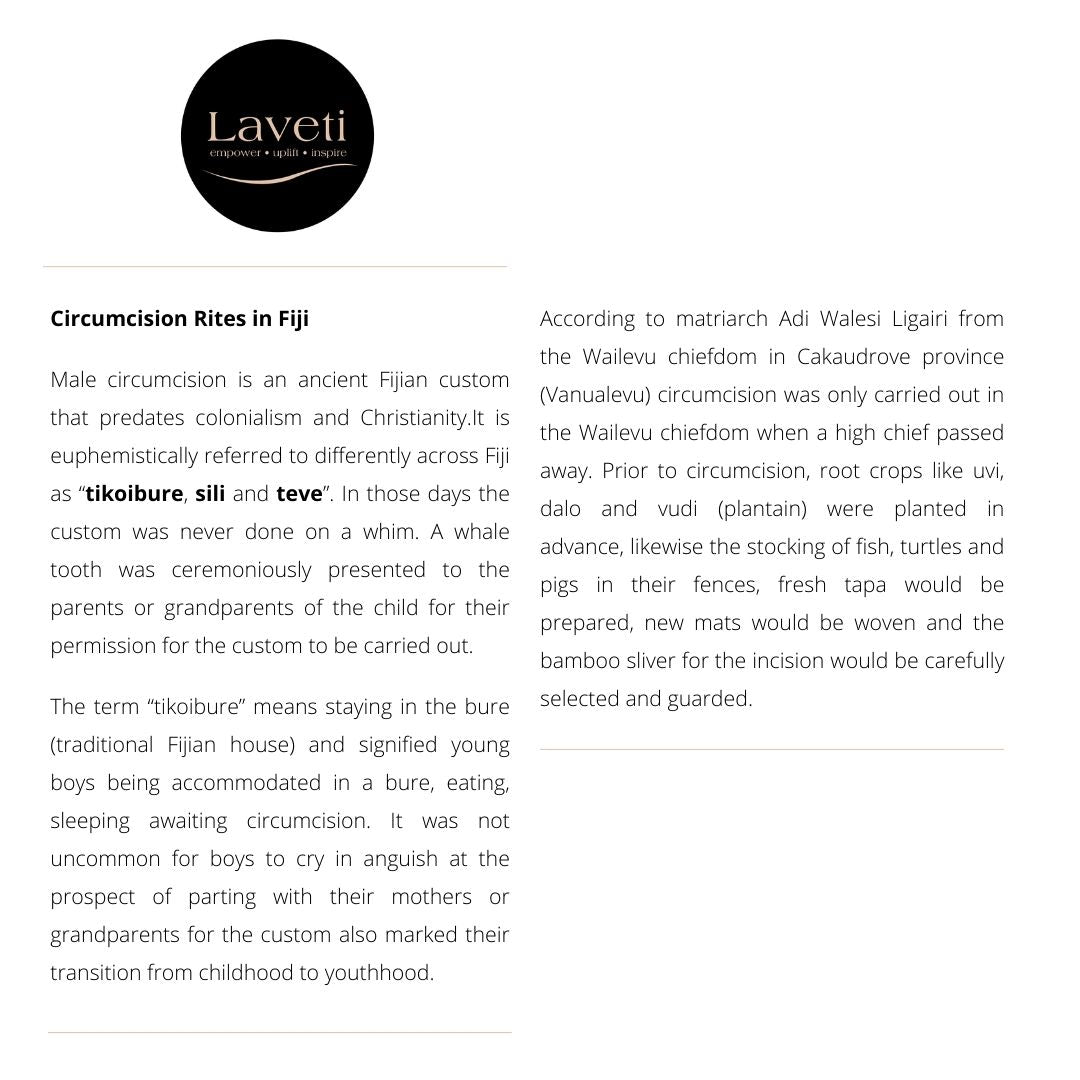Circumcision Rites in Fiji
Male circumcision is an ancient Fijian custom that predates colonialism and Christianity. It is euphemistically referred to differently across Fiji as “tikoibure, sili and teve”. In those days the custom was never done on a whim. A whale tooth was ceremoniously presented to the parents or grandparents of the child for their permission for the custom to be carried out.
The term “tikoibure” means staying in the bure (traditional Fijian house) and signified young boys being accommodated in a bure, eating, sleeping awaiting circumcision. It was not uncommon for boys to cry in anguish at the prospect of parting with their mothers or grandparents for the custom also marked their transition from childhood to youthhood.
According to matriarch Adi Walesi Ligairi from the Wailevu chiefdom in Cakaudrove province (Vanualevu) circumcision was only carried out in the Wailevu chiefdom when a high chief passed away. Prior to circumcision, root crops like uvi, dalo and vudi (plantain) were planted in advance, likewise the stocking of fish, turtles and pigs in their fences, fresh tapa would be prepared, new mats would be woven and the bamboo sliver for the incision would be carefully selected and guarded.
In the chiefdoms of the Ra province on mainland Vitilevu, during the period the boys were “tikoibure” they would be taught the roles and responsibilities expected of them once they are circumcised. The actual process would be carried out in a pond or pool after which it would be purposely muddied to indicate the completion of the process.
When the initiates arrived back at the bure, ‘rerega’ (turmeric) was applied to the wound and bound in clean white tapa strips. The strips would be changed daily until the fourth night when a feast was held to formally mark the completion of the transition. The feast is called “magiti ni yavou”.
The matua or elder in charge of the new initiates parades them in front of the clan as newly initiated young men. Then they would take their place on the new mats and tuck into the prepared banquet amid much celebration and dancing.
From there on, the young men would live in their bure – a sort of bachelors’ quarters and were expected to begin their own gardens and building their own bure
Today, the practice is still carried out but there is no matua or elder supervising it. The ponds or streams once used in the process now remain quiet and still. Instead, it is carried out by a doctor in any hospital in a quick and painless process that lasts up to 5 minutes at the most. There is no enculturation carried out today like in the days of old, no donning of the white tapa loincloth or malo. Instead of a village celebration, it has become more of a private extended family occasion because the custom is now observed in the urban areas. In fact, the colonial impact of having everything anatomical to be carried out in the hospitals has resulted today in the loss of traditional knowledge and elders who once were the custodians of circumcision, female tattoos and even childbirth. The feasting after the four nights though still exists but mostly confined to the privacy of the family. Nonetheless, a version of the custom exists today as a reminder that prior to the western notion of celebrating birthdays, the early Fijian matua version of marking and celebrating transition for boys was the “tikoibure, sili or teve” custom.
Source: Simione Sevudredre
A sample idabedabe or selected mats for the newly initiated at the head of a prepared feast

Magiti ni Bogi Va (Four nights celebratory feast). Circumcised young boys in the usual one-piece cloth tied behind the neck taking their place at the feast.






